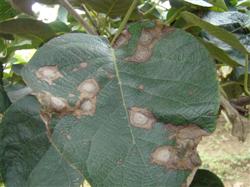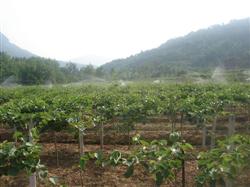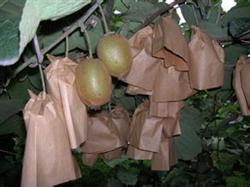Identification and control of kiwifruit branch blight

Kiwifruit branch blight, also known as dehydrated branch blight, is a physiological disease caused by climatic factors, which is caused by no man-made fertilizer or drug damage, as well as pathological root rot, branch rot, canker and so on. the phenomenon of sudden wilting and death of fruiting branches or vegetative branches. The main symptoms are as follows: 1. The main symptoms are the wilting of the leaves of the fruiting branches in the outer part of the crown, and then the water loss and death of the whole branches, but the mother branches are normal. In a garden, the disease of the whole garden or the whole plant is less, and the branch withered is often found in the local garden or on a local branch. Second, the time of onset generally occurs in the rapid emergence of new shoots of kiwifruit, that is, the alternating period of spring and summer from April to May. During this period, the northern region in the case of spring drought, is often the prevailing period of dry and hot wind, which has a certain impact on kiwifruit such as broad-leaved fruit trees. Third, the law of the disease is generally easy to induce the disease during the persistent drought in spring. There are two conditions for the occurrence: one is the spring drought and the other is the strong wind. In the case of spring drought, if there is a strong wind of more than 6 degrees and lasts for more than 5 hours, kiwifruit trees can become ill. The disease of young fruit trees without shade for more than 4 years is more serious, because of its strong growth potential, urgent demand for water, shallow root distribution, limited absorption function and relatively poor drought resistance, once the strong wind weather occurs, the disease is serious. The orchard in the north-south direction suffered more seriously, followed by the east-west direction, the border encirclement was serious, and the line in the garden was the second. The reason is that the east-west wind direction is mostly in spring and summer in Guanzhong area, and the wind is different on the wind side of the trees in the same line. In addition, in the tuyere area or scattered orchards, relatively concentrated orchards or sheltered orchards rarely occur, which is directly related to the intensity of the wind. Fourth, the first prevention and control measure is to pick the heart early. It mainly aims at the top advantage of the peripheral fruiting branches, accelerate the Lignification of the branches, reduce the windward side, and improve the wind resistance. The second is standard binding. After winter pruning, the fruiting mother branches must be bound and arranged in an orderly manner to avoid overlapping and crowding, so as to prevent the space of fruiting branches from growing densely, shifting in case of wind, increasing friction, causing wounds and decreasing wind resistance. Third, pay attention to irrigation. Especially in the case of serious wind damage in spring drought, irrigation is advocated to slow down the destruction of tree water physiological balance caused by surface evaporation and foliar transpiration caused by strong wind.
- Prev

Key points of kiwifruit planting technology
Actinidia belongs to Actinidia genus of Actinidia family, is a deciduous vine fruit tree, rich in vitamins and nutrients, known as the "king of fruits", has high economic value and cultivation value. Suitable for mild climate, abundant rainfall, fertile soil, lush vegetation, soil to deep, good drainage, moist...
- Next

Technical experience in cultivation and Management of kiwifruit-- planting techniques
Kiwifruit bagging is a technology popularized in recent years, and there are many problems due to lack of experience. The author received a question from the members of the association. In order to solve this problem, we investigated the current situation of bagging kiwifruit in Zhouzhi and Meixian and found some urgent problems to be solved. First, why there is a fruit drop investigation after bagging.
Related
- Moge, come on! The staff of the peasant association in the producing area of cantaloupe were frightened when the crowd gathered.
- Causes and Solutions of low Fruit setting rate of Apple
- Symptoms and control measures of passion fruit virus disease
- Fruit growing lesson: how do apple orchards keep high yields?
- Can you build orchards in the mountains? What are the pros and cons?
- How to manage the coloring period of Crisson grape?
- This paper introduces the processing technology of two kinds of fig products.
- How much is a month for retired teachers in rural areas by 2020?
- How can strawberry planting increase sugar content? We should pay attention to management in many aspects.
- What are the cultivation techniques on how to improve the yield of golden fruit?

